History of the Dutch Republic, bound for the Raadspensionaris
- Regular price
- €3.500,00 EUR
- Regular price
-
- Sale price
- €3.500,00 EUR
- Unit price
- per
[Le Jean]; Pieter Steyn (1706–1772) [owner].
Introduction a la revolution des Pays-Bas, et a l'histoire des Provinces-Unies.
[Paris, Claude-François Simon], 1754.
3 volumes in one. 12°. xv, 160, viii, 272, viii, 154, [iv] pp.
Fine contemporary richly gilt-tooled red morocco, with the coats of arms of the eight United Provinces and the motto "Unum Praecunctis Fama Loquetur Opus" on the front cover; on the back cover, the emblem of the Grand Pensionary of the United Provinces, with the motto "Jura Tuitor" and the title "Grand Pensionnaire". The spine features Dutch lions; gilt roll on the inner dentelles, all edges gilt, marbled endpapers.
With ownership inscription in ink on the title-page: "C. R. Jardel" (Claude-Robert Jardel, 1712–1788), and the bookplate of Charles Van der Elst (1904–1982) on the front pastedown.
First edition of a celebratory and politically resonant history of the Dutch Republic, bound for Grand Pensionary Pieter Steyn (1706–1772).
The Grand Pensionary (Raadpensionaris) was one of the most powerful figures in the Dutch Republic (1588–1795), particularly in the dominant province of Holland. Though not officially head of state, he functioned as a de facto prime minister, guiding policy, diplomacy, and finance—particularly in the absence of a Stadtholder. The role symbolised the Republic’s distinctive blend of legalism, commerce, and civic republicanism. Notable holders include Johan van Oldenbarnevelt, Johan de Witt, and Pieter Steyn, the owner of this volume.
Pieter Steyn, a lawyer from a prominent Haarlem regent family, served as Grand Pensionary from 1749 until his death in 1772. Though less prominent than his seventeenth-century predecessors, he was a skilled and steady administrator who helped preserve the Republic’s institutional stability during a period of political stagnation and diplomatic caution. His tenure reflected the values of the conservative, merchant-oriented ruling class that dominated late-republican Holland.
The work places particular emphasis on the early development of the Dutch Republic, concentrating on the period from the mid-sixteenth century through to the Peace of Westphalia in 1648, which secured the Republic's formal independence. It makes frequent reference to the writings of Hugo Grotius, the celebrated Dutch jurist and historian. Barbier attributes the work to a figure named “Le Jean”.
This copy has belonged to several distinguished collectors, including Comte de l’Empire Maximilien-Sébastien Foy (1775–1825) (1926, no. 262) and Charles Van der Elst (1904–1982) (II, 1988, no. 90). Van der Elst, President of the Royal Society of Bibliophiles and Iconophiles of Belgium, was a renowned collector of fine bindings and historical editions.
Condition: Very slight wear to binding at the hinges, small paper loss at the corner of one leaf, minor spotting to one page of the index. Otherwise in excellent condition.
Reference:
Barbier II, 962.
Couldn't load pickup availability
Share
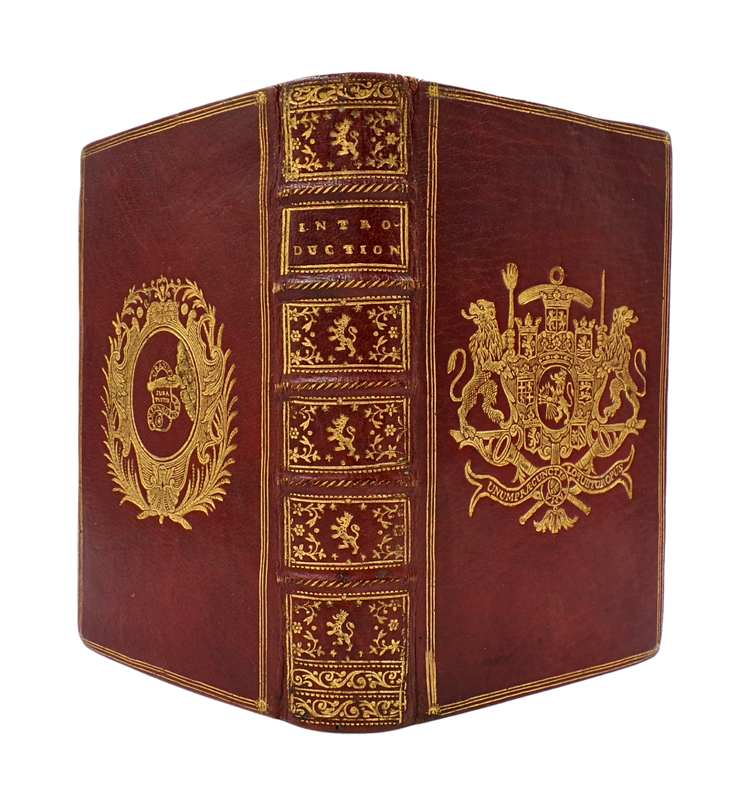
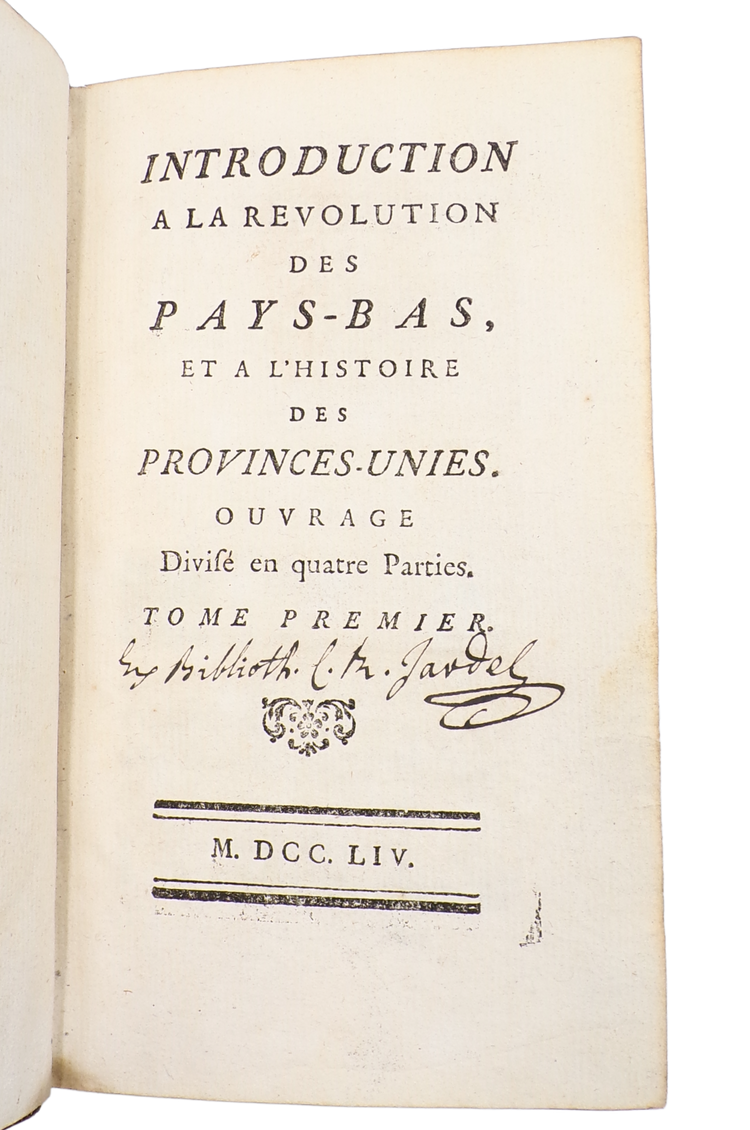
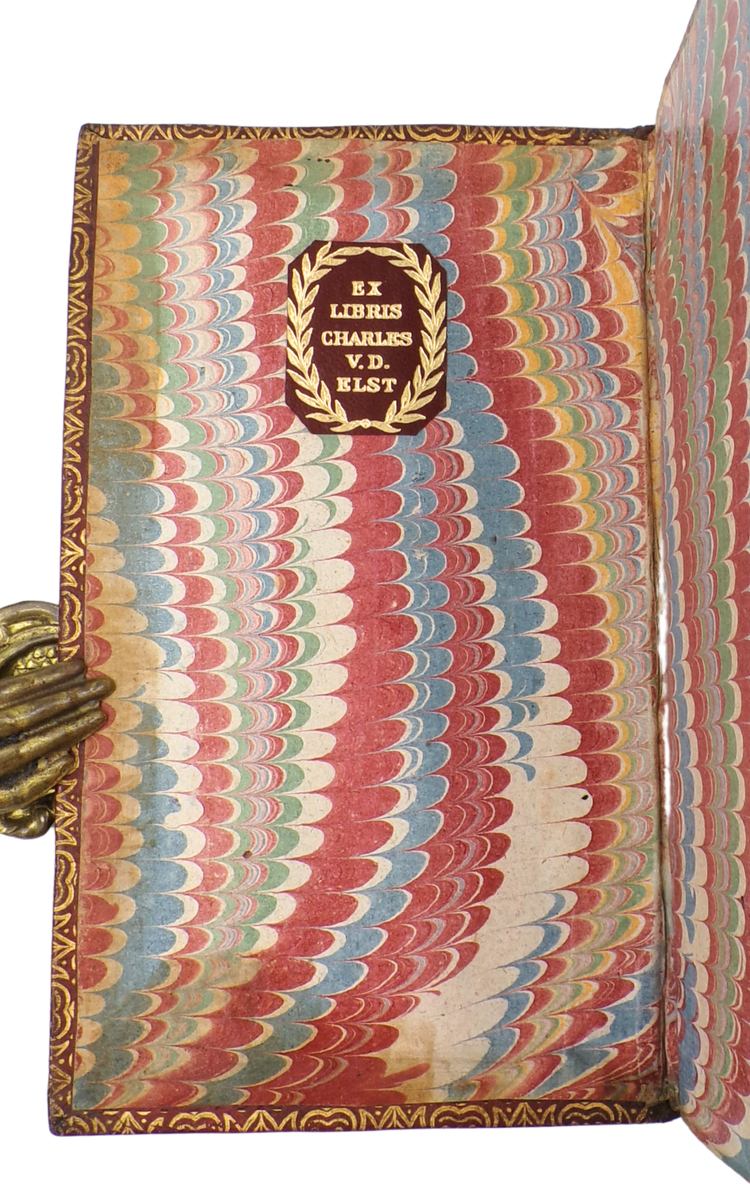
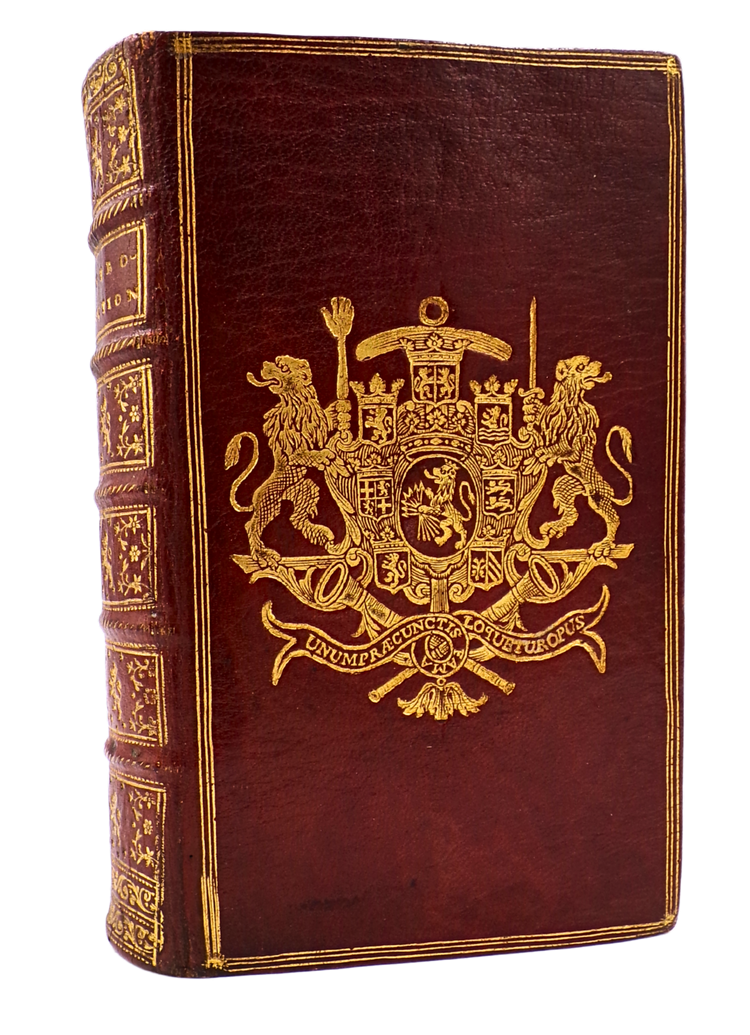
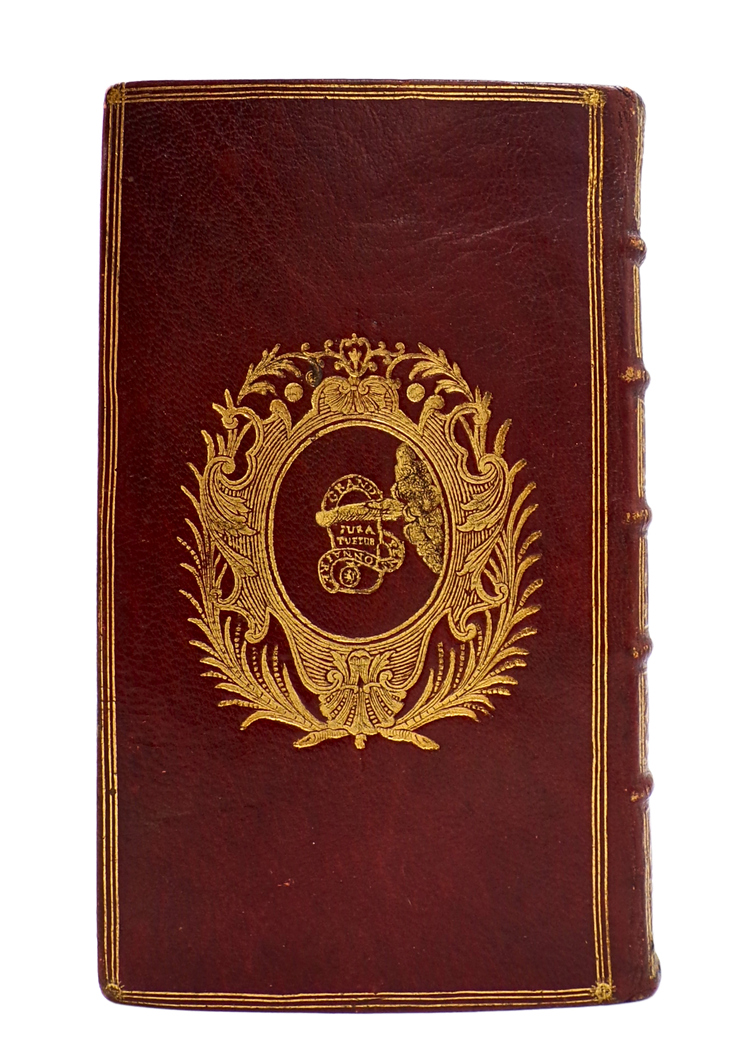
Contact
Email: hugo@artemrarebooks.com
Phone: +31651042297
Visit us on appointment at:
Former US Embassy
Lange Voorhout 102
2514EJ
The Hague (The Netherlands)
Shipping address:
Nannie van Wehlstraat 51
2548MN
The Hague
The Netherlands





